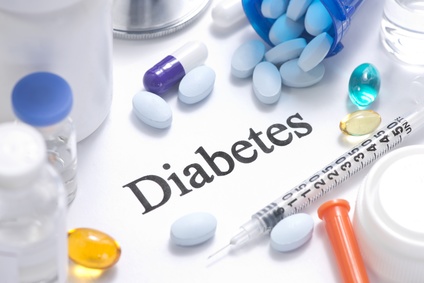In 2013, the WHO-PEN (Package of Essential NCD Interventions) guidelines for managing type 2 diabetes in low-resource settings included diet, physical activity and metformin as first-line treatment; sulfonylurea as second-line treatment (or first-line treatment if metformin is contraindicated); and insulin as third-line treatment.
The newly released 2018 guidelines for diabetes treatment intensification in non-pregnant adults with diabetes mellitus has two main takeaways:
- The newer oral hypoglycaemic agents were not found to be superior to metformin and sulfonylurea. These agents include dipeptidyl peptidase-4 inhibitors (DPP-4 inhibitors), sodium-glucose co-transporter 2 inhibitors (SGLT-2 inhibitors) and thiazolidinediones (TZDs). The guidelines consider their use as second- and third-line treatment for hyperglycaemia in type 2 diabetes.
- Lack of evidence of the better effectiveness of insulin analogues vs human insulin. Human insulin has a better resource-use profile and is the preferred insulin for adults with type 1 diabetes and in adults with type 2 diabetes for whom insulin is indicated
Key recommendations in the updated 2018 guidelines
Recommendation #1: Give a sulfonylurea* to patients with type 2 diabetes who do not achieve glycaemic control** with metformin alone or who have contraindications to metformin (strong recommendation, moderate-quality evidence).
Remarks
*Glibenclamide should be avoided in patients aged 60 years and older. Sulfonylureas with a better safety record for hypoglycaemia (e.g. gliclazide) are preferred in patients for whom hypoglycaemia is a concern (people who are at risk of falls, people who have impaired awareness of hypoglycaemia, people who live alone, people who drive or operate machinery as part of their job).
**The WHO PEN protocol recommends a target fasting blood glucose of <7 mmol/L (126 mg/dl). However, an individualized approach is encouraged in setting the patient’s target level for glycaemic control, taking into account their comorbidities, risks from medication side-effects and their likely benefit from tight glycaemic control in view of life expectancy.
Recommendation #2: Introduce human insulin treatment to patients with type 2 diabetes who do not achieve glycaemic control with metformin and/or sulfonylurea (strong recommendation, very low-quality evidence).
Recommendation #3: If insulin is unsuitable*, a DPP-4 inhibitor, SGLT-2 inhibitor or a TZD may be added (weak recommendation, very low-quality evidence).
Remark
*Insulin treatment could be unsuitable when circumstances make its use difficult (e.g. persons who live alone and are dependent on others to inject them with insulin).
Recommendation #4: Use human insulin to manage blood glucose in adults with type 1 diabetes, and in adults with type 2 diabetes for whom insulin is indicated (strong recommendation, low-quality evidence**).
Remarks
* Recommendation 4 covers both short-acting (regular human insulin (RHI) and intermediate-acting human insulin (NPH insulin).
**The recommendation is strong because evidence of the better effectiveness of insulin analogues is lacking and human insulin has a better resource-use profile.
Recommendation #5: Consider long-acting insulin analogues to manage blood glucose in adults with type 1 or type 2 diabetes who have frequent severe hypoglycaemia with human insulin (weak recommendation,* moderate-quality evidence for severe hypoglycaemia).
Remark
*Recommendation 5 is a weak recommendation reflecting the lack of, or very low-quality evidence for, any of the long-term outcomes such as chronic diabetes complications and mortality, and the considerably higher costs for long-acting insulin analogues compared to intermediate-acting human insulin.
The National Guideline for the prevention and control of diabetes in Nigeria is in the works. According to the Health Minister, the guideline will ensure standardized protocol for medical care and patient self-management education to prevent acute complication and reduce the risk of long-term complications among Nigerians living with the disease. It is expected to be completed in 2021.
The recommendations contained in the WHO-PEN guidelines are relevant to low-resource countries like Nigeria and can be adopted pending the completion of our national guidelines. Click here for the 2013 edition
The 2018 update is available here

